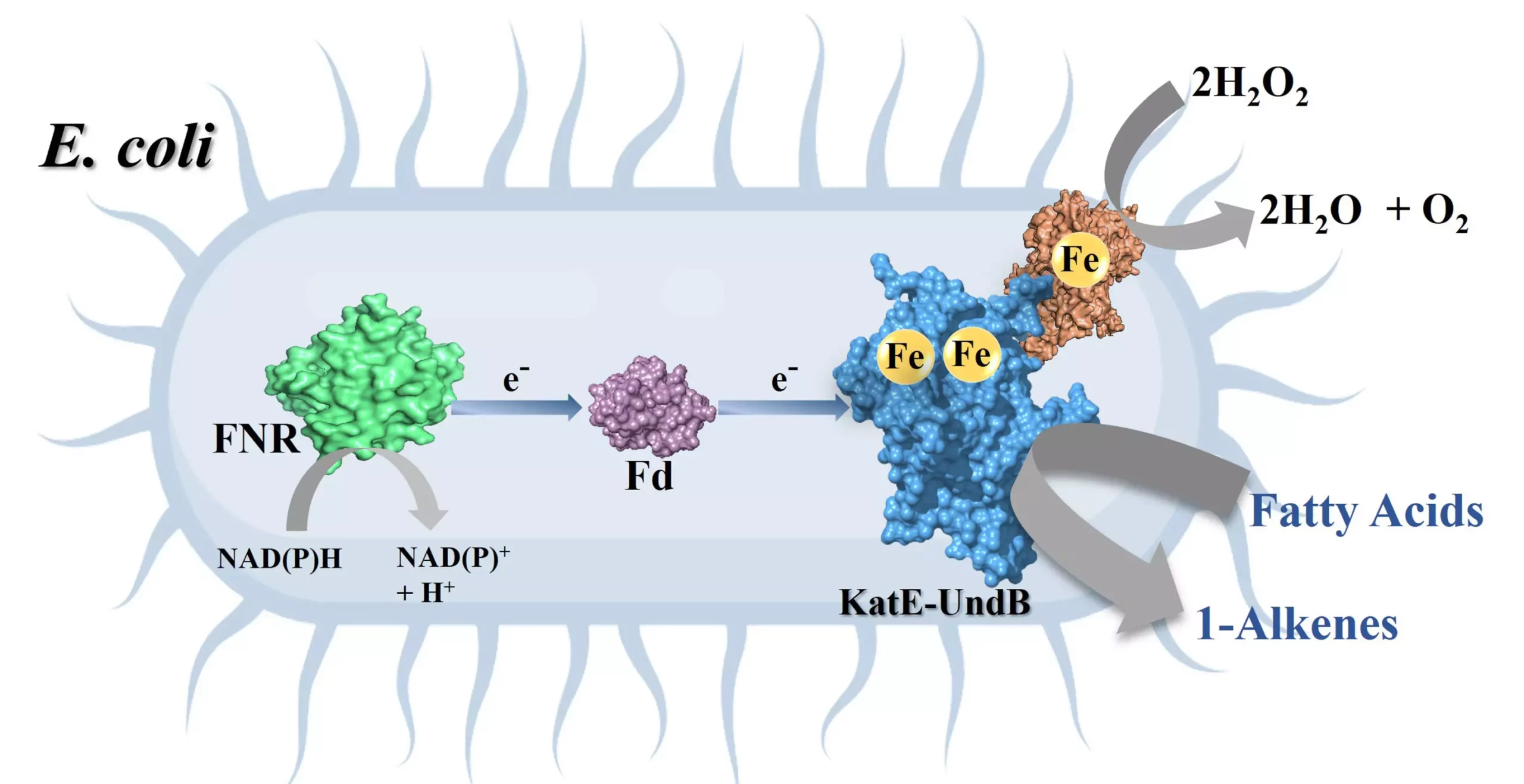As the world grapples with devastating climate change and the relentless depletion of fossil fuel reserves, the search for sustainable energy solutions has never been more urgent. Traditional fossil fuels, despite their convenience and energy-dense properties, are increasingly viewed through a critical lens due to their finite availability and catastrophic environmental footprint. In this context, researchers at the Indian Institute of Science (IISc), particularly within the Department of Inorganic and Physical Chemistry (IPC), have embarked on a promising journey towards creating biofuels using naturally abundant materials, specifically fatty acids. Their innovative enzymatic platform is turning heads in the scientific community for its potential to revolutionize the biofuel industry.
From Fatty Acids to Valuable Hydrocarbons
The IISc team, led by the capable hands of Ph.D. student Tabish Iqbal, has developed a method to convert fatty acids into 1-alkenes, hydrocarbons that present a viable and promising biofuel option. These hydrocarbons are termed “drop-in” biofuels because they can seamlessly integrate into existing fuel infrastructures without requiring significant modifications. With hydrocarbon usage expanding across various industries—including polymers, detergents, and lubricants—the significance of this advancement cannot be overstated. It evokes the notion that waste, in this instance, can indeed be transformed into wealth.
Previously, the team had honed in on an enzyme called UndB, which, despite its potential, presented challenges due to its limitations in sustaining activity over prolonged use. This enzyme, derived from bacteria, was a key player in the production of 1-alkenes, but its efficacy had been stymied by hydrogen peroxide (H2O2)—a byproduct generated during the conversion process. This revelation underscores the complexities involved in enzymatic reactions, where enthusiasm can quickly turn to frustration when faced with abrupt inactivation of enzymes.
Innovative Strategies to Enhance Enzyme Efficiency
The hurdles posed by these biochemical constraints led the IISc team to engage in creative problem-solving. Their decision to introduce catalase—a well-known enzyme that degrades hydrogen peroxide—into the reaction mix resulted in a remarkable 19-fold enhancement of UndB’s activity. From a mere 14 turnovers to an impressive 265, this breakthrough exemplifies the potential for manipulation in biochemical pathways to yield profitable outcomes. Such additions highlight an essential aspect of scientific inquiry: the intersection of traditional biochemical understanding with innovative experimental design.
As their research progressed, the researchers ambitiously aimed to construct a chimeric protein that fused UndB with catalase and introduced it into E. coli to act as a “whole cell biocatalyst.” This concept of utilizing microorganisms as factories to synthesize valuable compounds is one that has potential applications far beyond this specific study. However, they faced additional challenges, particularly with the membrane-bound nature of UndB, which can be toxic to bacterial hosts at elevated concentrations.
Maximizing the Potential of Biocatalysts
To address these challenges, the IISc team meticulously explored the effects of various “redox partner” proteins to streamline the electron transfer process essential for converting fatty acids into 1-alkenes. Their efforts led to the realization that proteins such as ferredoxin and ferredoxin reductase, coupled with NADPH, significantly enhanced the efficiency of the overall enzymatic reaction. By achieving a staggering conversion efficiency of up to 95% for fatty acids, this approach solidifies the innovative potential of biocatalysis in the realm of sustainable energy.
Moreover, the specificity of UndB offers a substantial advantage—delivering pure 1-alkenes without unwanted byproducts. This precision opens avenues for practical applications in the biofuel sector while also catering to the diverse needs of the chemical and polymer industries. The ability to produce styrene actually broadens the implications of their discovery, attracting interest from multiple sectors keen on sustainable production methods.
The Path Forward: Industry Collaborations and Innovations
With a patent already in view for their ingenious fusion protein and whole-cell biocatalyst, the IISc researchers are now determined to engage with industry partners to scale up their innovation for mass production. What sets this study apart is not merely its scientific elegance but the realization that sustainable biofuels derived from inexpensive, abundant materials can become a tangible reality. The team’s enthusiasm and forward-thinking mindset could indeed lead us toward a future where environmental sustainability is intricately woven into the fabric of our energy consumption.
In a world where the existing energy paradigm is under serious scrutiny, the research from IISc stands as a beacon of hope. It not only demonstrates the potential for transforming lower-value resources into high-demand products but also serves as an inspiring model for how the scientific community can lead the way in crafting a more sustainable future. As researchers like those at IISc push the boundaries of biofuel technology, the vision of a greener tomorrow seems not just possible but increasingly within reach.


Leave a Reply